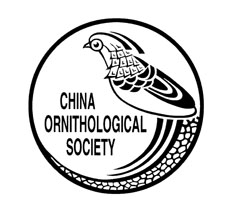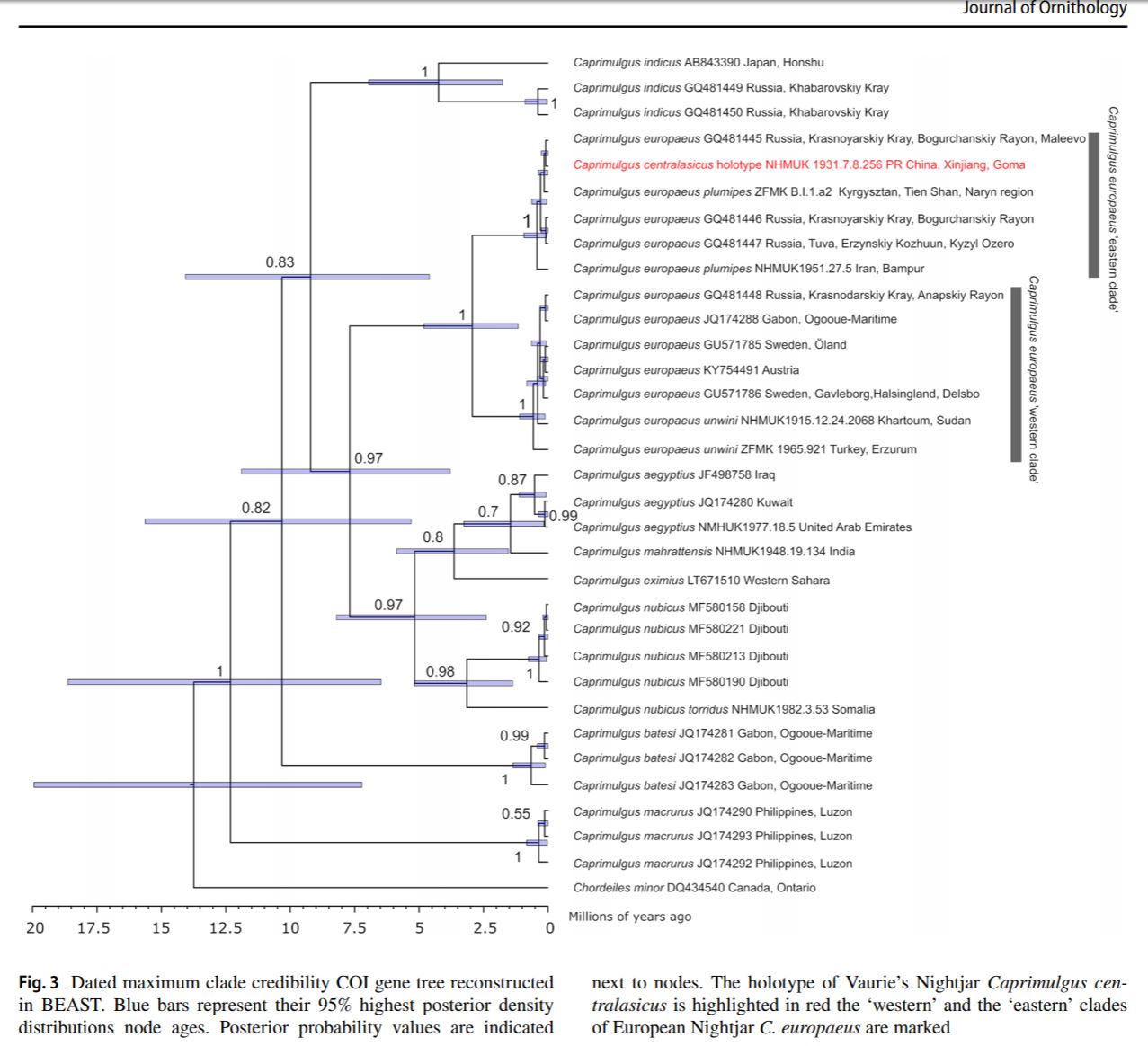基于分子生物学证据的中亚夜鹰分类地位研究
分会秘书长:北京林业大学生态与自然保护学院 丁长青/100083, Tel 010-62336869, Email:cqding@bjfu.edu.cn
One of the last remaining enigmas among Palearctic bird species is Vaurie’s Nightjar Caprimulgus centralasicus. It is known from a single specimen, said to be an adult female, collected in September 1929 southeast of Yarkand, Xinjiang, in westernmost China, and originally identified as an Egyptian Nightjar C. aegyptius. All major world checklists and authors of monographs on the Caprimulgiformes accept C. centralasicus as a species, but efforts to rediscover it in the field have failed, meaning that occasional doubts have been expressed as to its taxonomic validity. We subjected the holotype of C. centralasicus to a molecular examination and renewed morphological comparisons, with the aim of resolving its status. We independently confirmed in two different laboratories that C. centralasicus has an identical partial fragment of the mitochondrial gene cytochrome oxidase subunit 1 b (COI) as five European Nightjars C. europaeus. The overall plumage coloration (but not size) of C. centralasicus is reasonably similar, especially on the upperparts, to at least some specimens of C. europaeus of the subspecies C. e. unwini and C. e. plumipes, and by implication to that of C. e. dementievi too, while several specimens of Sykes’s Nightjar C. mahrattensis are a reasonably close match in coloration to C. centralasicus, also lack an obvious nuchal collar, and possess a similar-length tail and pattern. There is a high degree of likelihood that C. centralasicus is a synonym of C. e. plumipes, but the small size of the holotype compared to C. europaeus persists in being difficult to fully rationalize, although we believe that the bird is, in fact, a fledgling in its first plumage, parts of which are still growing, which would explain much of the difference. In addition, based on current data, there is no correspondence between described subspecies of C. europaeus and genetic variability. Phylogeographic structure within C. europaeus and its correspondence with morphological, especially plumage variation, requires further investigation using a more comprehensive geographic sampling from the breeding grounds.


